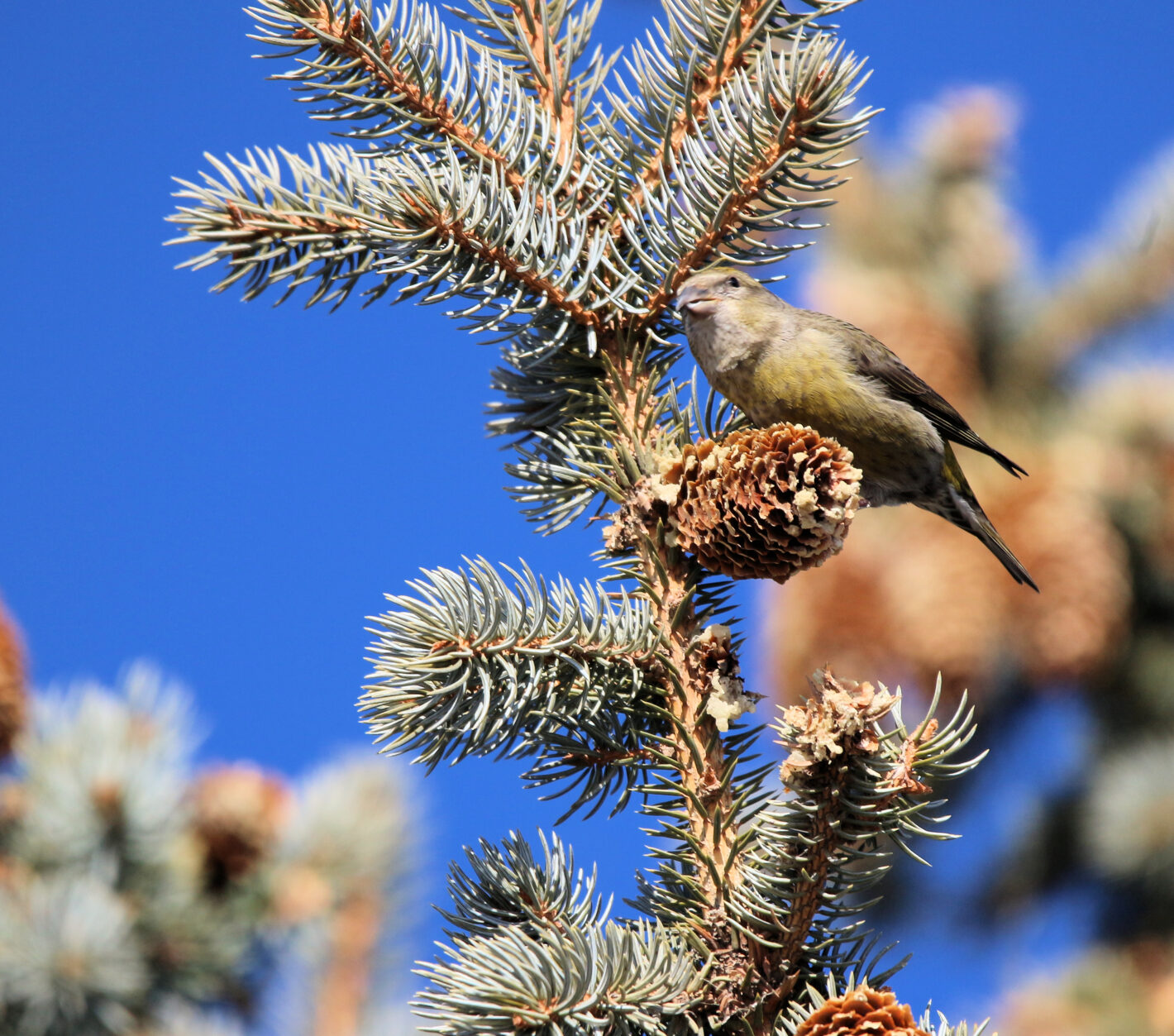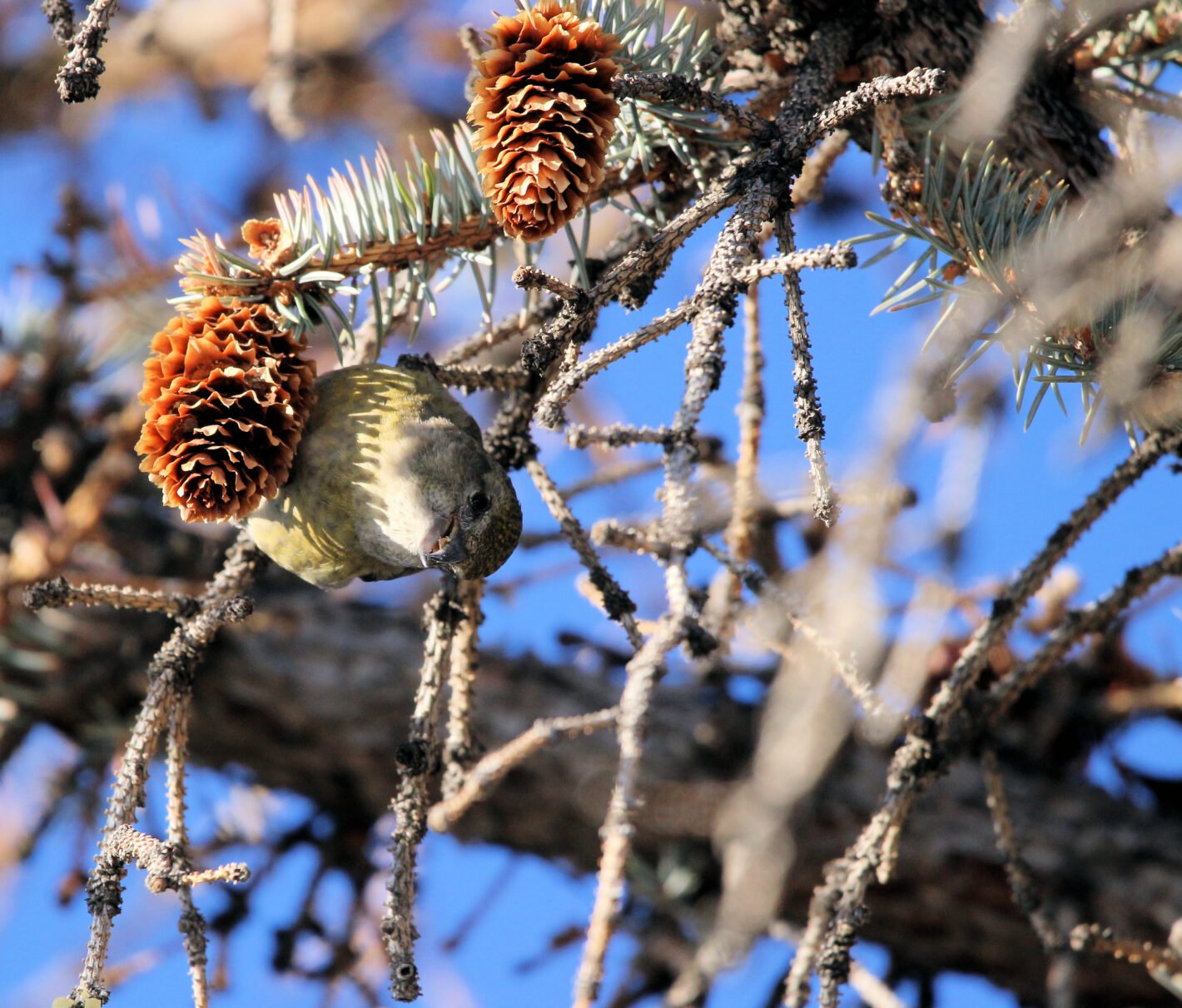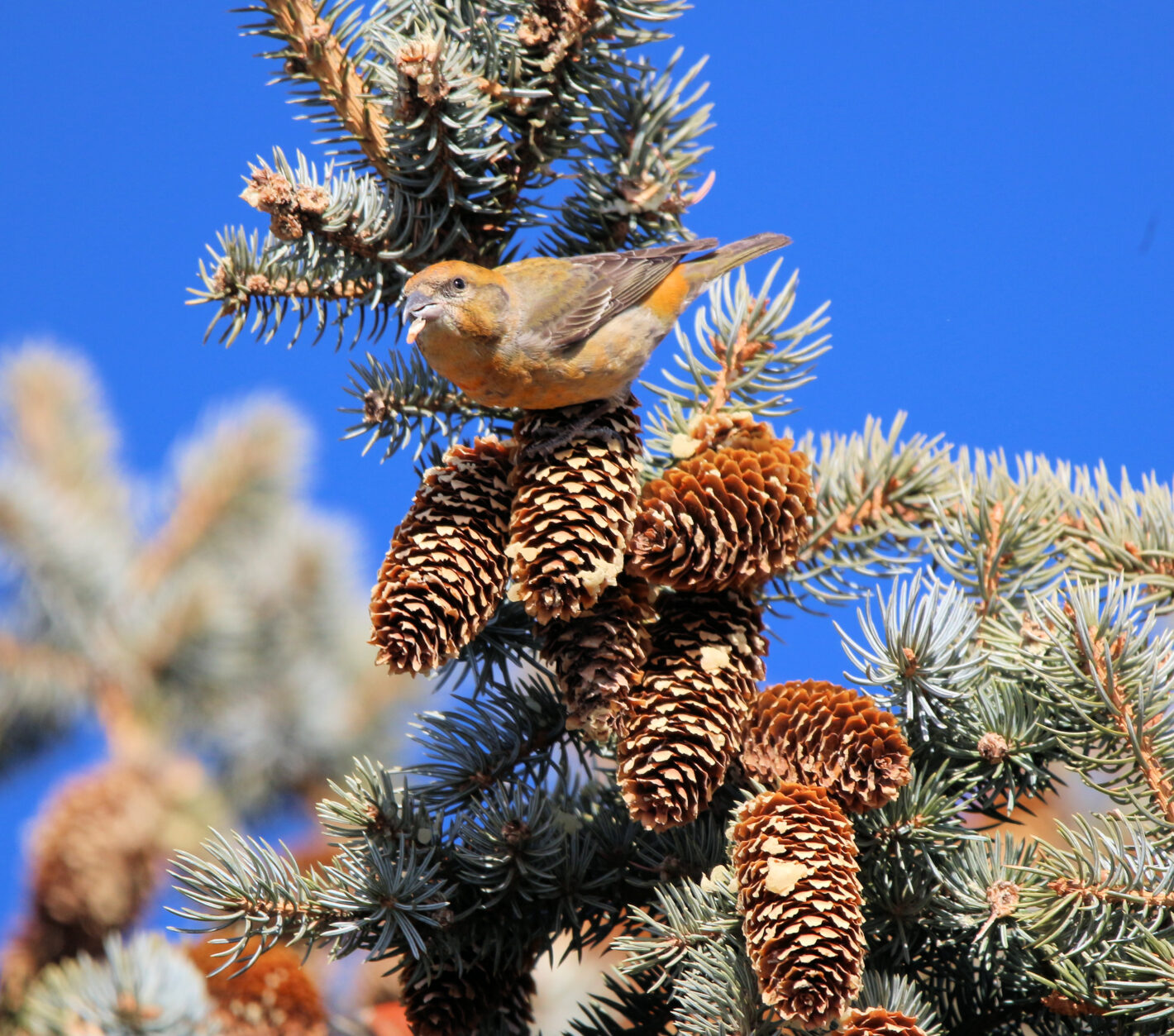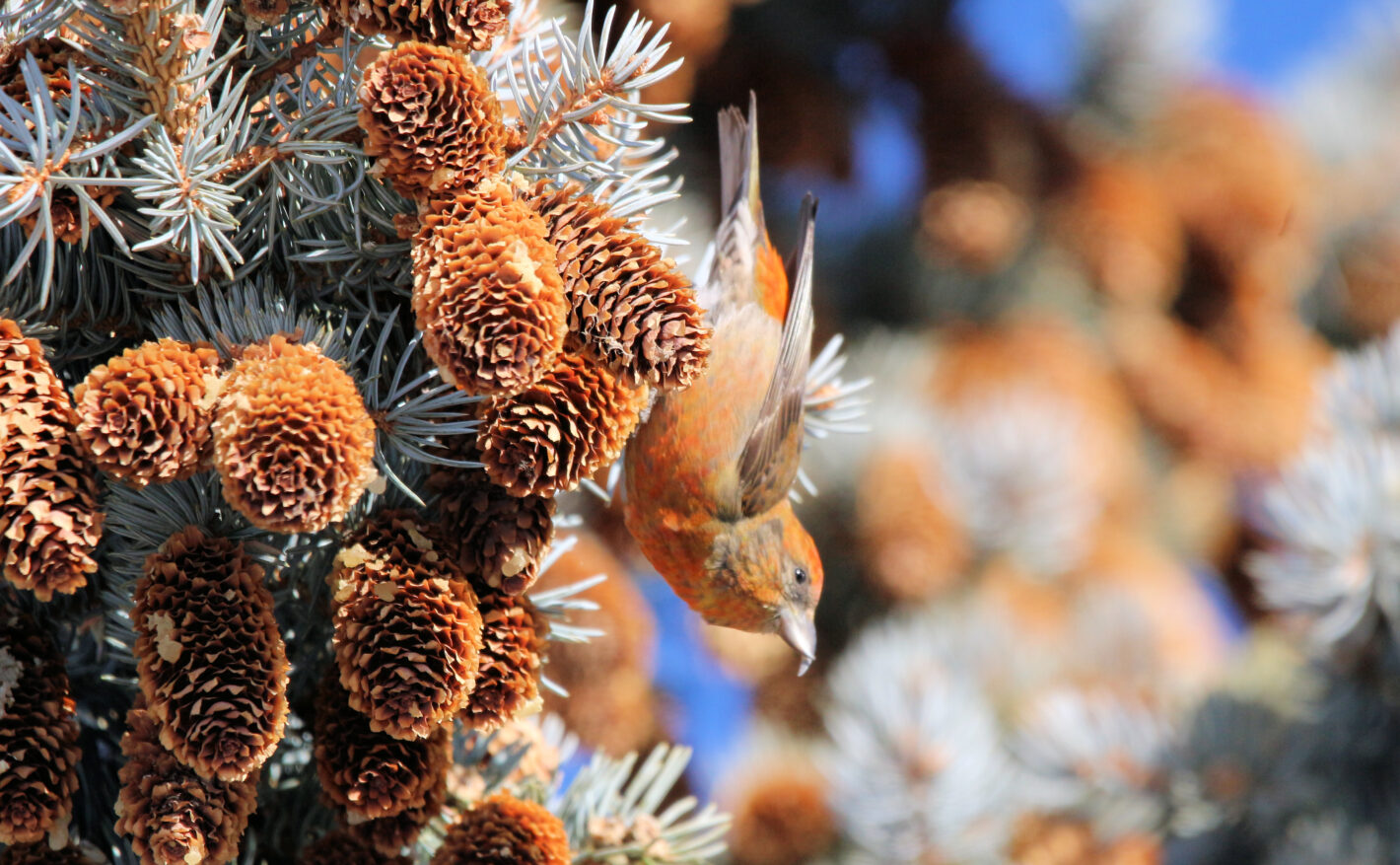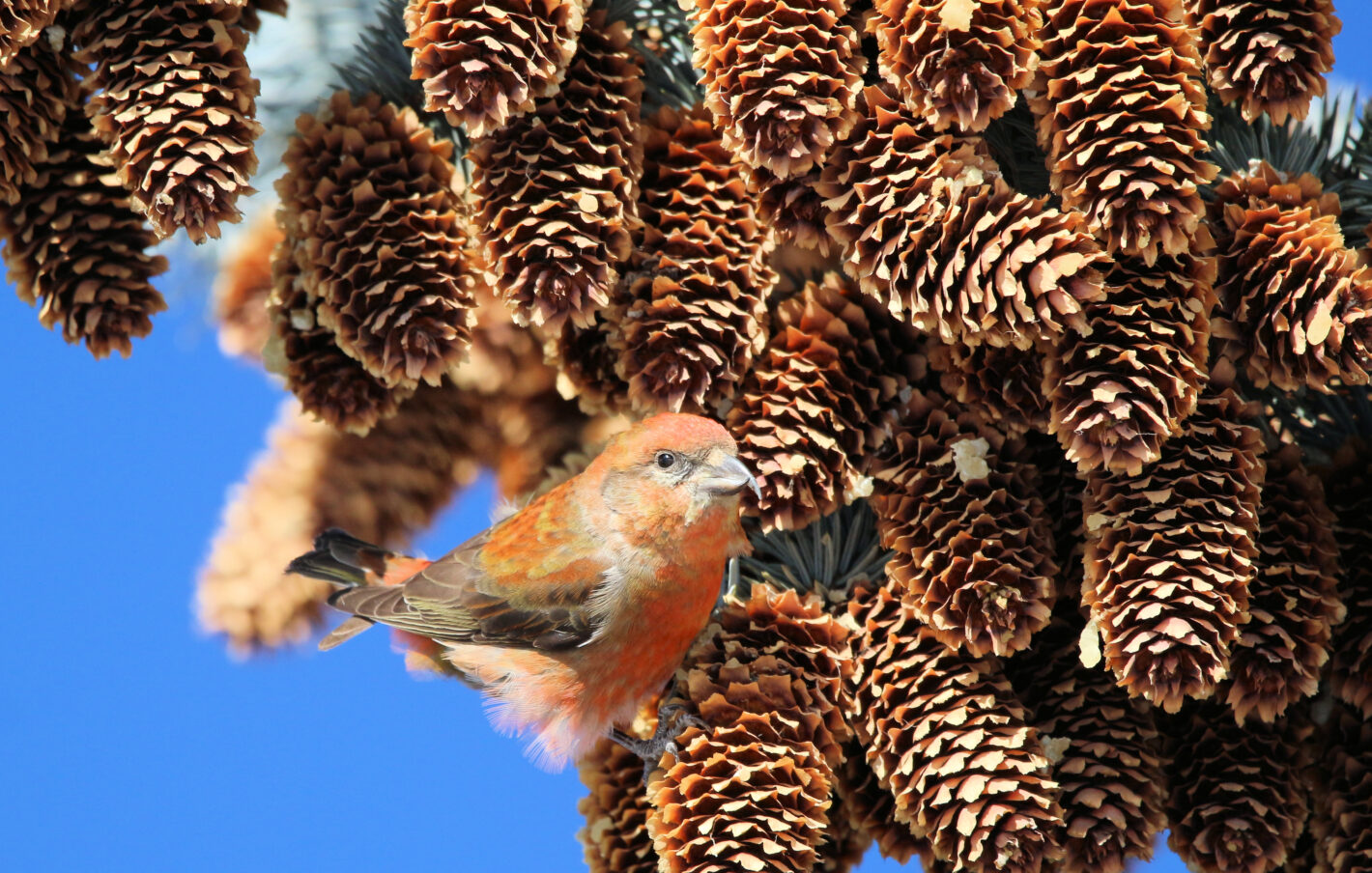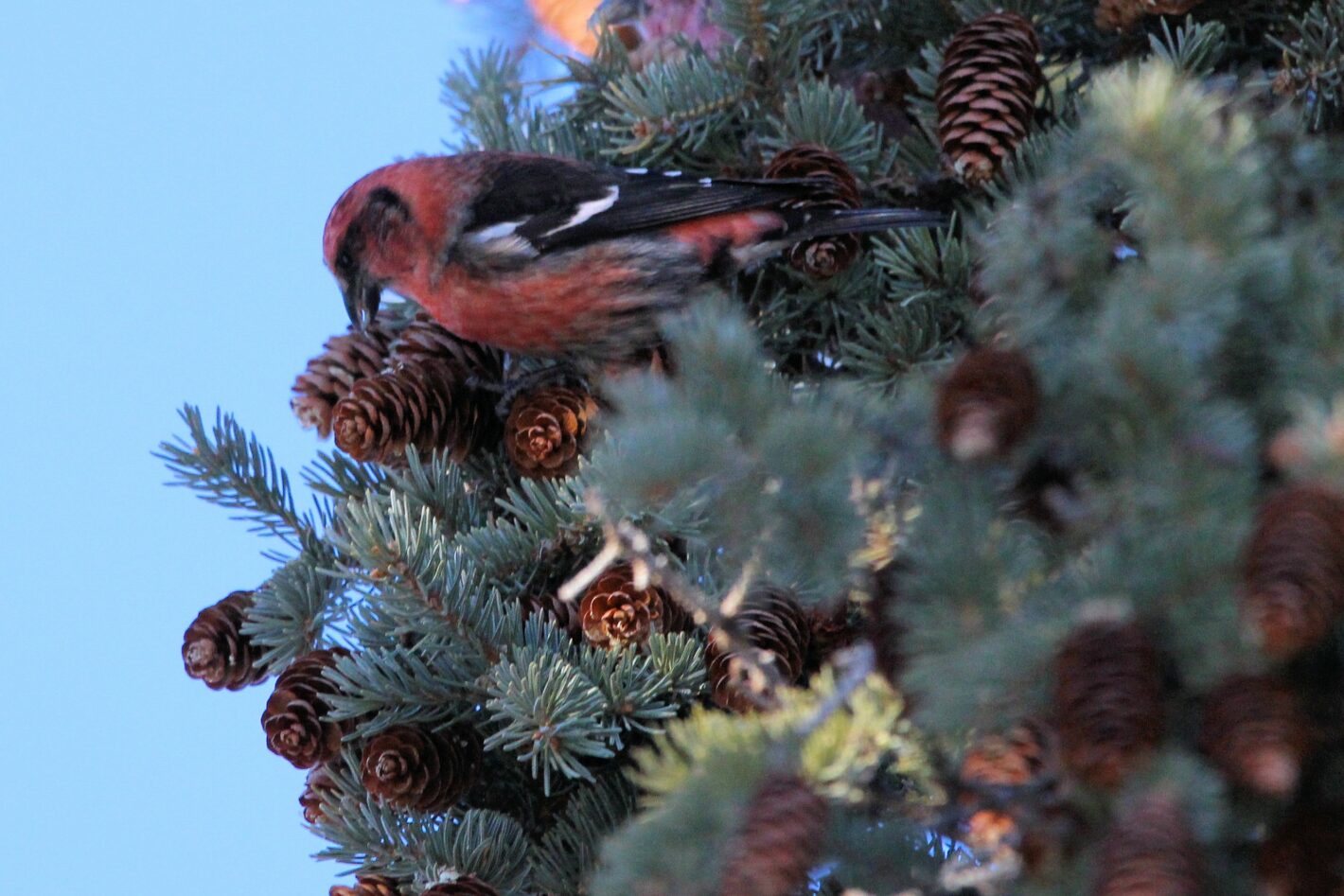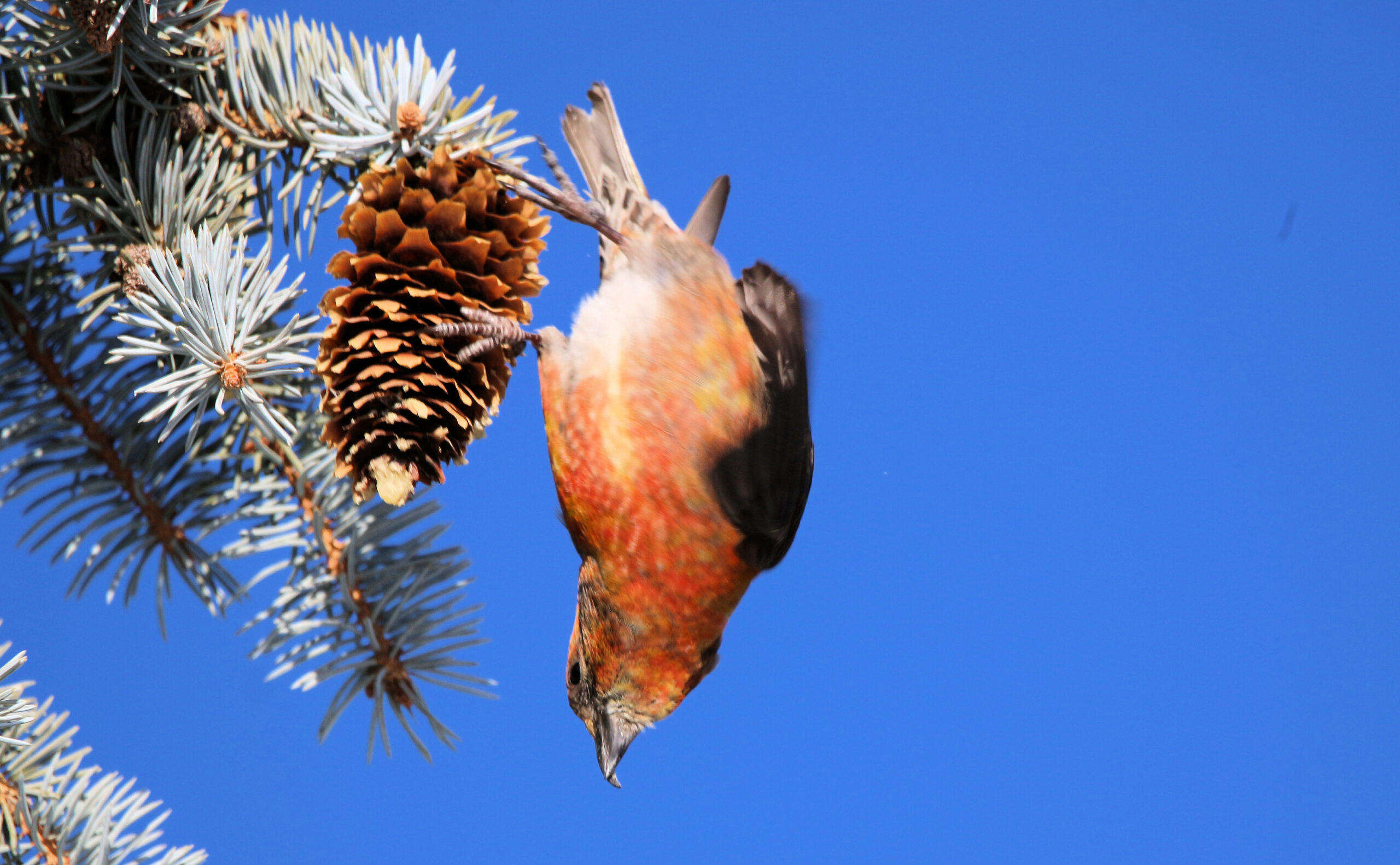With the whispers of winter reaching across Alberta the last while, the bird watcher, feeling somewhat melancholy with the fall migration history, does have something to anticipate. Our “winter birds”, thriving in unique habitats, capture both eye and camera. Colourful and at times plentiful, Bohemian Waxwings, Pine Grosbeaks and Red Crossbills, to name a few, make winter much more enjoyable.
Aptly named, the Red Crossbill is a unique species, most notably sporting a crossed bill. This bill is especially designed to pry open coniferous tree cones in order to enjoy devouring the seeds inside. Male and female crossbills are distinctly different in color. Males are a dominant red with darker reddish-brown wings, while females are a yellowish hue, paired with darker wings. Juveniles are generally brown with brown streaking on the chest and underparts.
Home for crossbills is truly the mature conifer trees in our Rockies and boreal forests. However, from time to time, an “irruption”, a sudden increase in population, occurs and bird watchers are fortunate to see crossbills. One of our favourite spots is Queen’s Park Cemetery, located just north of Confederation Park, a second excellent birding park. The cemetery has an ample number of mature coniferous trees that attract crossbills. On a recent trip a sizable flock of twenty-five flew over Queen’s Park a number of times, suddenly landing high up in the conifer trees. Preferring mature trees the park cemetery offers, the crossbills nestle themselves deep into the branches. They are truly engaging and entertaining, performing acrobatic skills that would be admired by the Cirque de Soleil. Red Crossbills use contact calls to convey to other crossbills the quality of the food in the tree in which they are perched. Belonging to the Loxia the finch family of birds, Red Crossbills are true nomads, migrating as needed to ensure adequate food supplies. Thirsty at times, just under a dozen crossbills landed on some snow on a building rooftop and used their bills to great effect, chipping chunks of snow and ice crystals to quench their thirst.
Scientists, every curious, note that there may in fact be eight or nine distinct populations of Red Crossbills that do not interbreed and are differentiated by unique calls. These populations are also specialized in targeting specific species of confer trees to form the diet. To further complicate identification, a second species of crossbill, the white-winged does travel into the Calgary area. Bird watchers need to look for two clearly identified white wing bars displayed on both sexes of the species. Queen’s Park Cemetery has been home at times to the white-winged crossbills as well, so keen eyes, a telephoto lens or binoculars can be handy in helping with identification.
For the birder winter days may be short, but one can indeed be “interrupted” by just the right irruption – that of the accurately named Red Crossbill.
